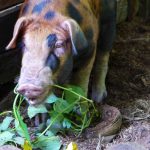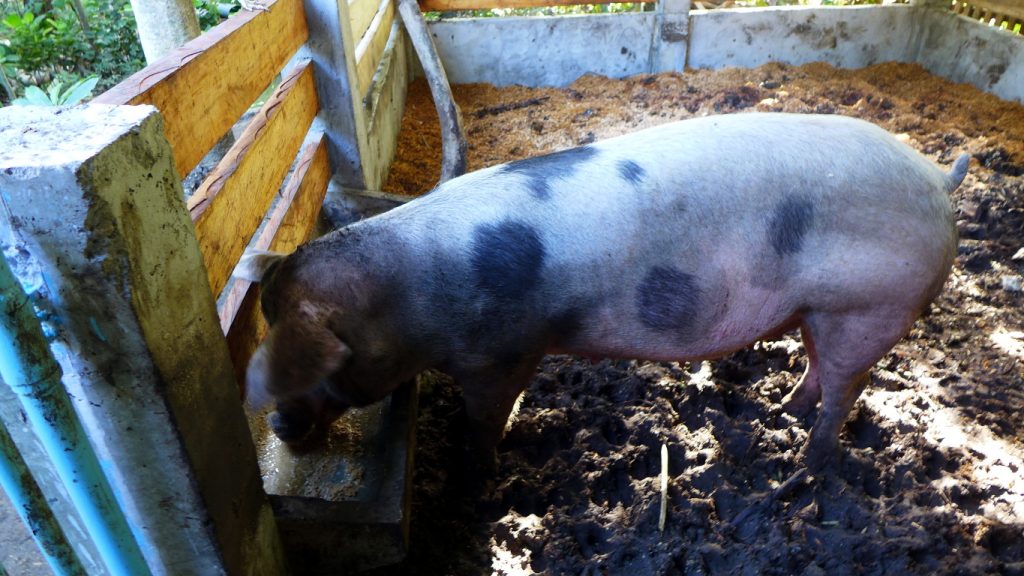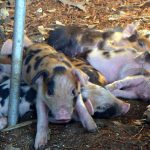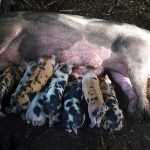If you look around the village you will still see old water cisterns built many decades ago before running water became available in households. Some of these have been abandoned, broken but a few are still in good use. Rainwater harvesting is particularly crucial if you have livestock, crops and drought seasons, as well as failures by the municipal waterworks to provide continuous running water.

Currently, we have three ponds that harvest rainwater. The first (photo above) is home to some 30-40 tilapia and floating water plants. It is located next to the house on the south side catching a good amount of rainwater flowing off the edge of the roof. It’s about 146 cubic feet (or about 4 cubic meters). I keep two buckets under the overflow pipe to collect more rainwater during an overflow.

The second (photo above) is located on the north side of the house and has a volume of about 70 cubic feet (or 2 cubic meters). This is home to water hyacinth, water lettuce and frogs. We didn’t put fish in this pond because the fish kills the water hyacinth and water lettuce. The presence of frogs and tadpoles make sure there are no mosquito larvae in this pond. The water in this pond is used as drinking water for sow Number 3 who also loves eating the water lettuce.

The third water reservoir is this (photo above), the duck pond. Some water lettuce thrive here but not the water hyacinths which the ducks eat immediately. This pond becomes dirty (build up of mud, organic material, algal blooms) when the duck population is high – that is, over a dozen ducks. This pond is not large enough for that many ducks. At the moment, I have only 8 ducks and it is the rainy season so the pond stays reasonably clean. The water plants also keep the water clean, preventing algal blooms. There are also 2 turtles in this pond, plus an impressive chorus of frogs and toads. These and the ducks ensure that mosquitoes do not thrive in this pond.

Rainwater from the first two ponds have been crucial during the Bohol (2013) and Leyte (2017) earthquakes which knocked down power supply to the island for several weeks. Without power, municipal water pumps are non-operational and cannot pump water to many households. We were able to use water harvested in these ponds for cleaning, for the animals to drink and for flushing.
Now we are seriously considering building another pond to harvest rainwater run-off from the roof of the new pigpens. This pond would be closer to the pigpens and would ease use. A rain garden nearby, where the ground slopes, might also be an excellent feature to catch water that overflows from the pond.

































